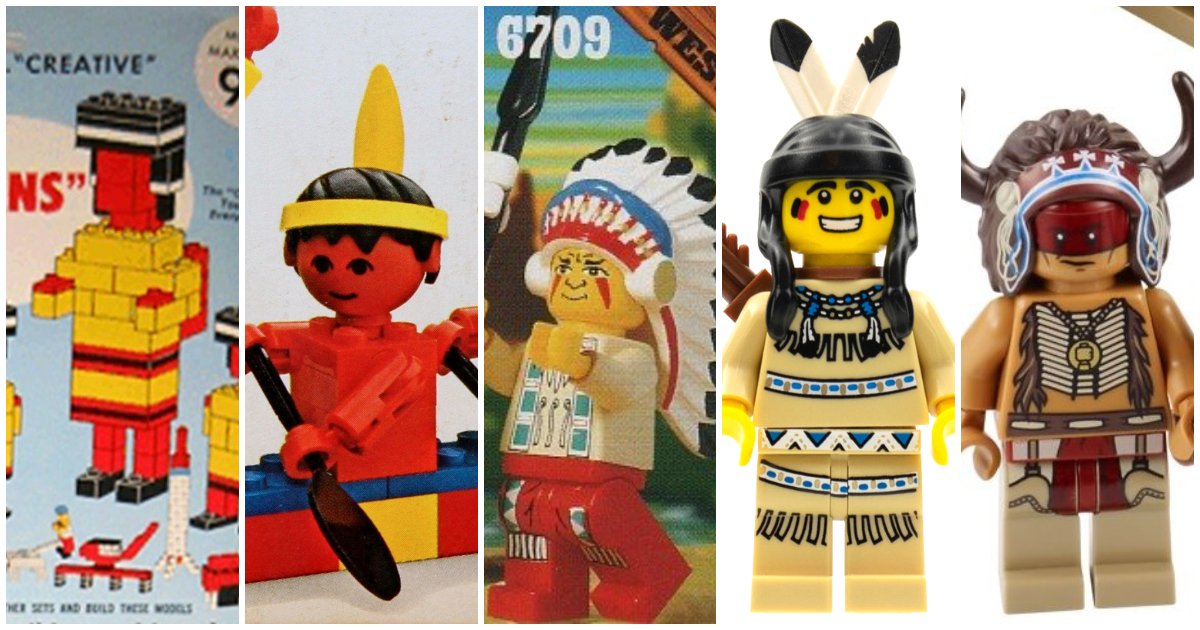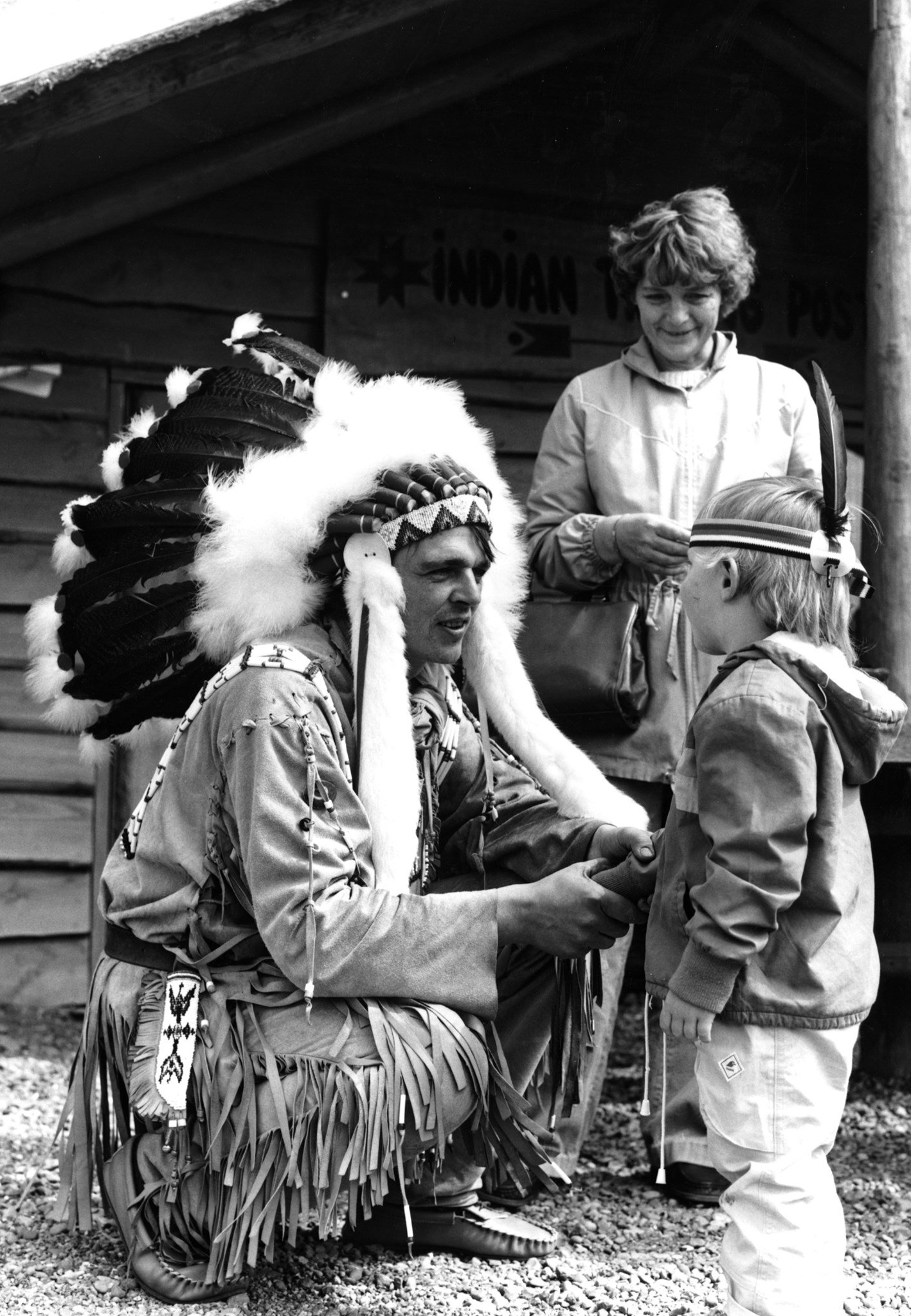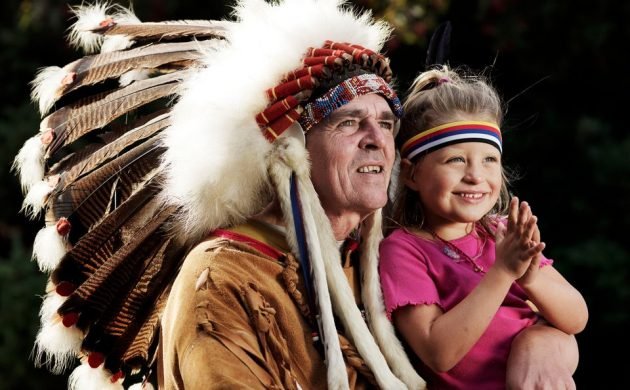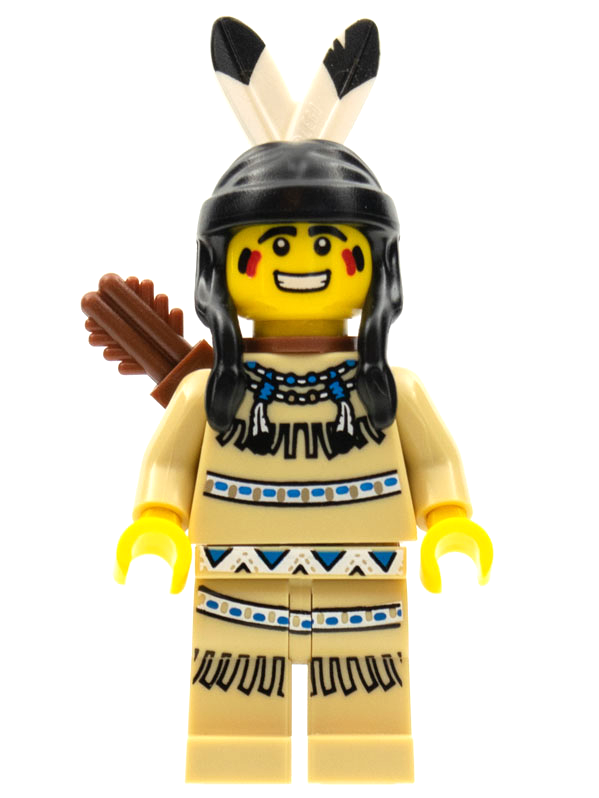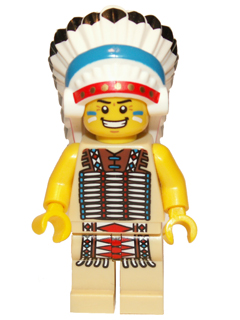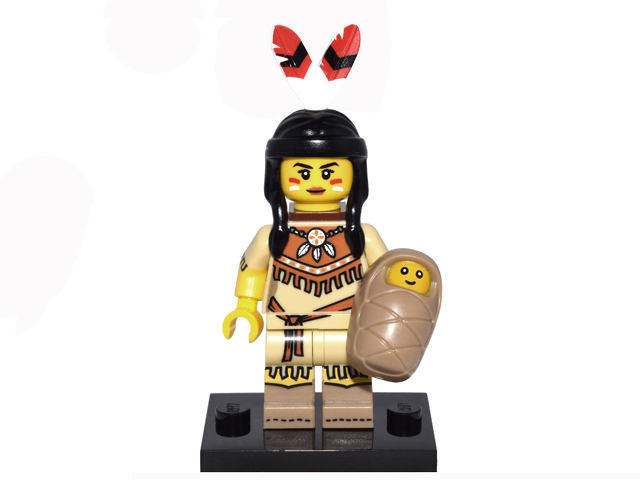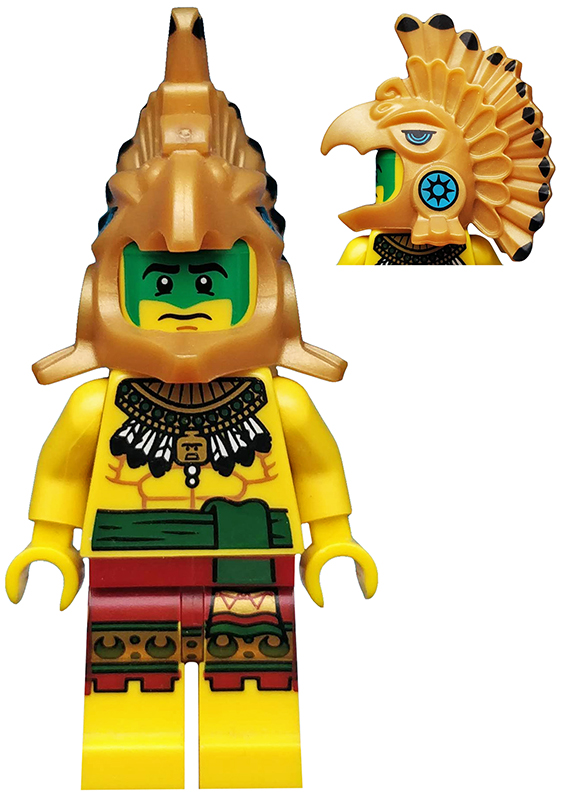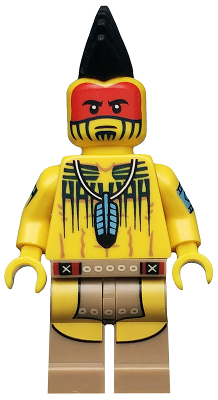Native American Heritage and LEGO Representation
/Best of BrickNerd - Article originally published November 4, 2022.
Happy November! (And Nerdvember!) Here in the United States, this month we celebrate Native American Heritage. We honor the many First Nations cultures that live and thrive in the area. Indigenous cultures in the Americas are represented by many First Nations – from Ojibwe, Iroquois, Cherokee, Comanche, Sioux, Dine (Navajo), Ute, Hopi, Paiute, Crow, Salish, Blackfeet, Cree, Shoshone, Mayans and many others. Each First Nation has their own culture that is honored year around and even more so during the month of November.
LEGO has represented Native American/First Nations cultures several times throughout its years. Since the “Spaghetti Western” forms gained popularity in the 1950s, the LEGO Wild West has had some indigenous representation. As with most businesses, the Native American culture is generalized, however, LEGO has tried to fix that over the years.
As a disclaimer, I feel as part of this article, it should be known that I’m part Ojibwe/Anishinaabe, from the Turtle Mountain Band of the Chippewa, out of North Dakota and historically around the Great Lakes. My English name is Lorren Loveless. My Anishinaabe name given to me by an elder is AandiGicaandum – which means “Seeks to Know in a Spiritual Way.” I’ve been building LEGO since the late ’70s (except for some years spent in my dark ages).
Please be aware this article contains several stereotypes and names that some may refer to as derogatory in our current world. This article is by no means a way for BrickNerd or myself to approve of the use of these stereotypes or terms. It’s just the way the product was named at the time of production by LEGO and is represented as factually as possible. I personally encourage The LEGO Group that if there are additional sets with any indigenous representation in the future, please, thoroughly investigate, contact and acknowledge the indigenous nations to better represent our culture respectfully and appropriately.
Camping in Billund
Today’s journey starts in Legoland Billund in 1968 where there was an “Indian Camp” led by “Chief Long Ears” (with long rabbit ears on his headdress) that eventually grew to be rebranded as Legoredo Town in 1973. Legoredo has several rides: Legoredo River, Flying Eagle roller coaster, The Haunted House, LEGO Canoe ride, LEGOLDMINE, and a Western Ride Carousel. In addition, it has accommodations of Western Cabins and Tepees where you can even stay there today.
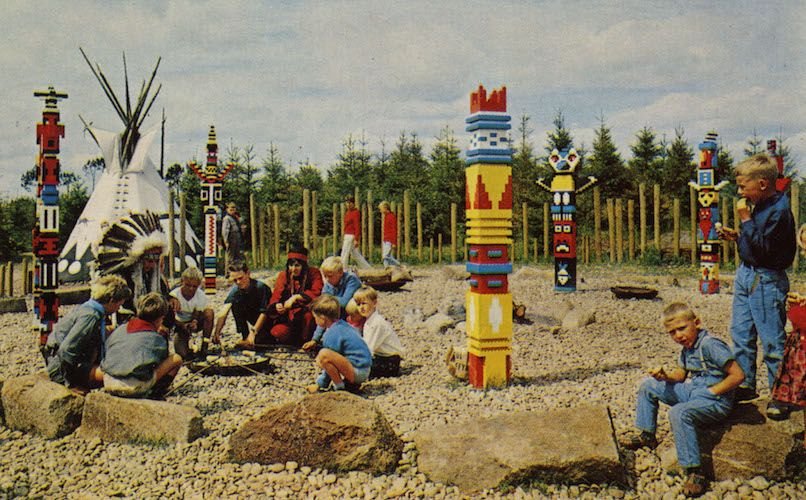
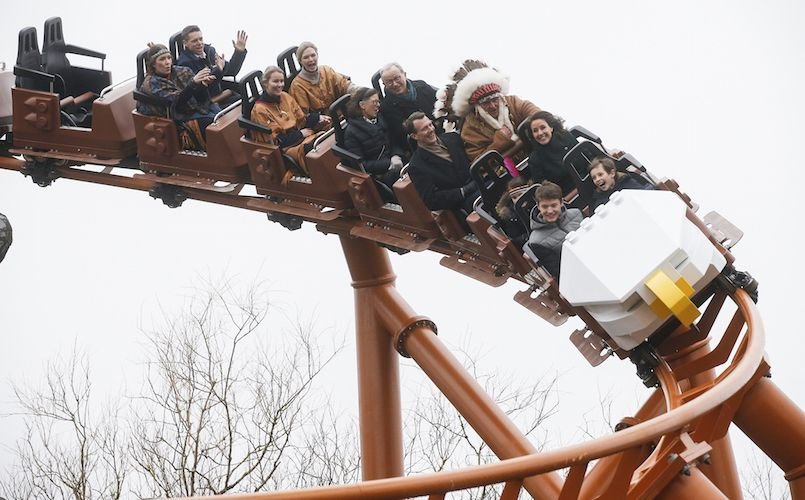
For almost 40 years until 2021, longtime LEGOLAND employee Jan Friborg played the aforementioned “Chief Long Ears,” speaking to kids in guttural words, showing them how to bake bread on sticks over an open flame, and awarding headbands. Friborg can be seen in these photos from LEGOLAND Billund’s Facebook page.
Brick-Built Figures
Like most commercial companies, LEGO romanticized the Wild West, and “Indians” started showing up as the focus of some sets. (Duplo sets are not included in this article.) The earliest one I’ve found is a brick-built figure set #805 – “3 Little Indians” from 1964.
The next set I could find is set #215 “Red Indians” which was based on the Homemaker series figures in 1977. The set came with a brick-built canoe, four red figures, and the precursor to the minifigure: a torso and head used as a baby on a cradleboard.
Pirates & The Wild West
At this point in 1978, LEGO started creating sets in a new direction of established classic themes – Town, Castle, Space and eventually Pirates in 1989. No Native American representation was in any of these themes during this time that I could find. Though there were some indigenous representations in the Pirates series, mostly stemming from South Pacific generalized representations like in 1994’s set #6262 “King Kahuka's Throne.”
Wild West nostalgia started again in 1996 when LEGO began their Western Series which included Native American representation in 1997. Set #2845 “Indian Chief” included the first minifigure representation and a brick-built Totem Pole. The set was a promotional release and available only in Holland, Germany, and the UK.
Another promotional release came in 1997 with set #2846 “Indian Kayak” which was in partnership with Blockbuster UK.
The first set available for purchase in the Western theme and “Indians” sub-theme was set #6709 “Tribal Chief” with 16 pieces that included a “painted” (printed) horse. Other sets include set #6718 “Raindance Ridge” with a white “painted” horse and one minifigure, #6746 “Chiefs Tepee” with a printed fabric teepee covering, totem pole and three minifigures, #6748 “Boulder Cliff Canyon” with two “painted” horses, one teepee, a totem pole and six minifigures, and #6766 “Rapid River Village” with two teepees, two “painted” horses andseven minifigures. (Also, fun fact, these sets were the first sets to contain the new snake element - hisssssssssssss.) You can see the full lineup in the gallery below.

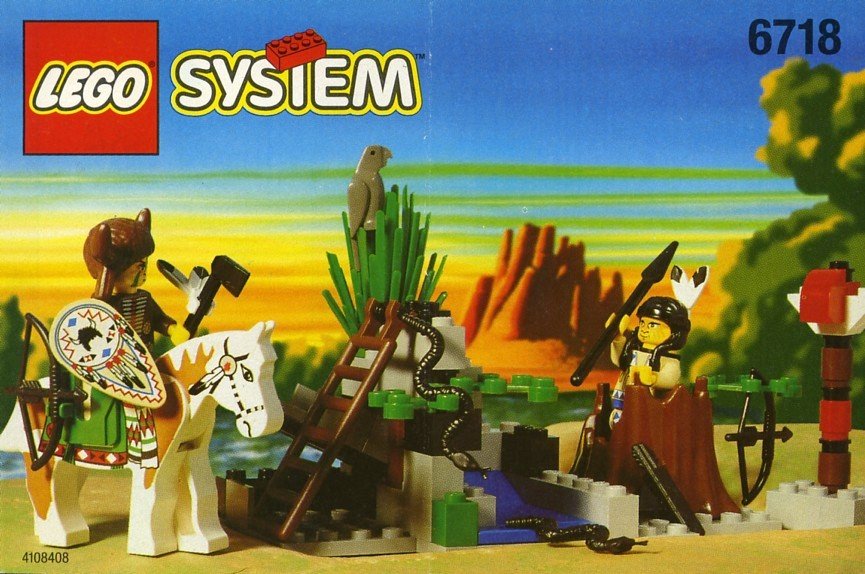

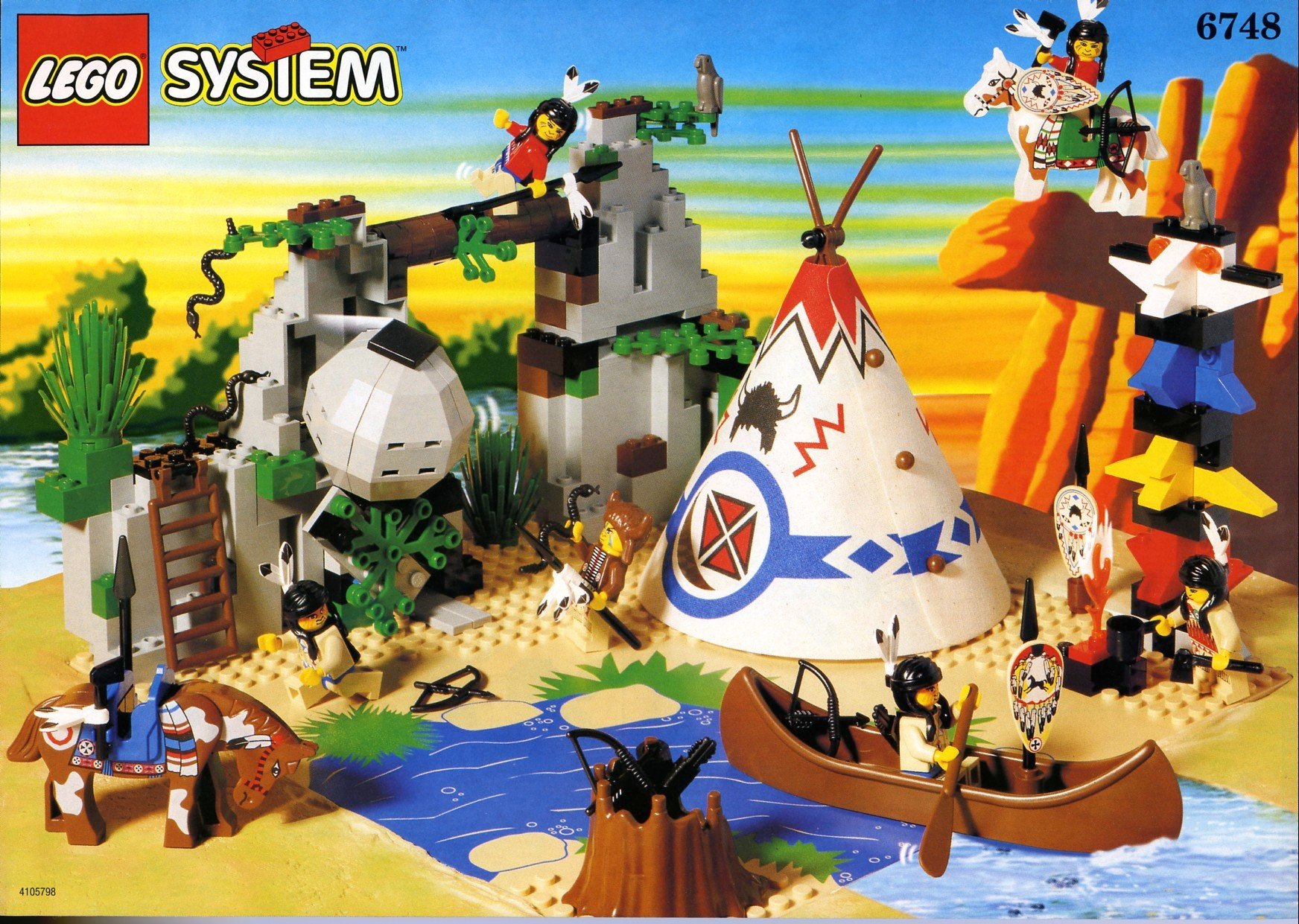
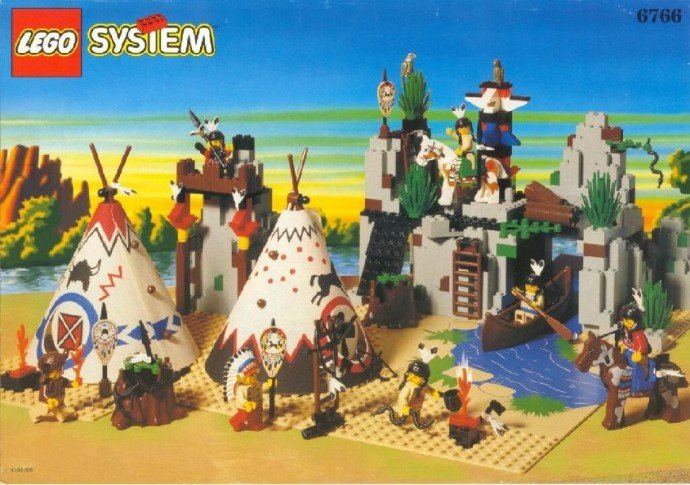
Of note, LEGO re-released “Rapid River Village” as set #6763 in 2002. These few sets were the only time that Tree 6 x 6 Hollow Stump were ever produced by the company.
CMFs & The Lone Ranger
There have been a handful of Collectible Minifigure (CMF) Series starting in 2010 with the first Series 1 “Tribal Hunter,” then followed by Series 3 “Tribal Chief,” and finally Series 15 “Tribal Woman with Baby.” In addition, there has been some American Indigenous representation with Series 7 “Aztec Warrior,” Series 10 “Tomahawk Warrior,” and Series 21 “Ancient Warrior.”
Lastly, LEGO released eight sets themed in conjunction with “The Lone Ranger” movie that came out in 2013. This included Native American representation through the character of Tonto (Comanche) played by Johnny Depp (made honorary Comanche in 2012) in the following sets:
#79107 “Comanche Camp” with three minifigures (also with minifigure of Red Knee, played by Gil Birmingham)
#79108 “Stagecoach Escape” with five minifigures
#79109 “Colby City Showdown” with five minifigures
#79110 “Silver Mine Shootout” with five minifigures (also with a minifigure of Chief Big Bear played by Saginaw Grant who passed away last July)
#79111 “Constitution Train Chase” with seven minifigures
#30261 “Tonto’s Campfire” polybag with one minifigure
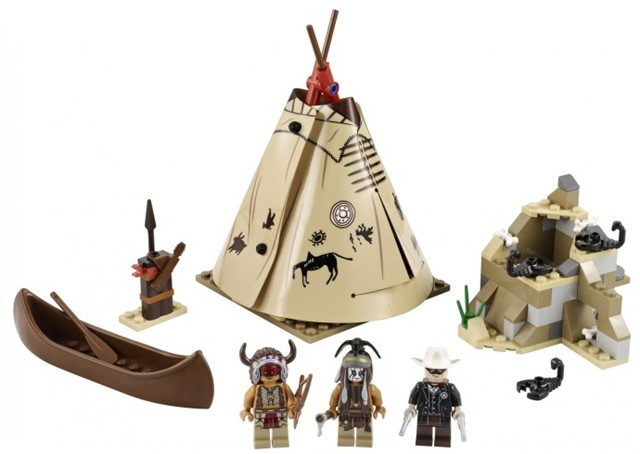
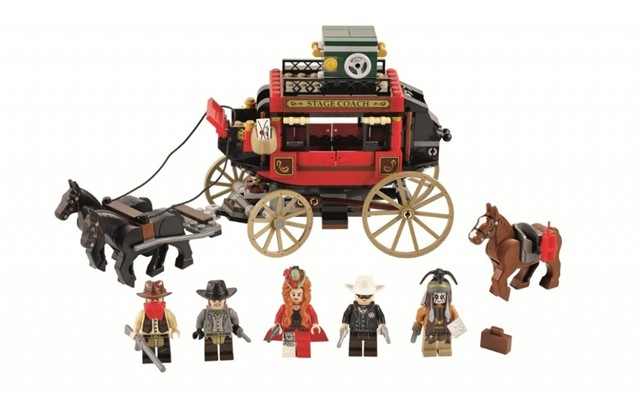
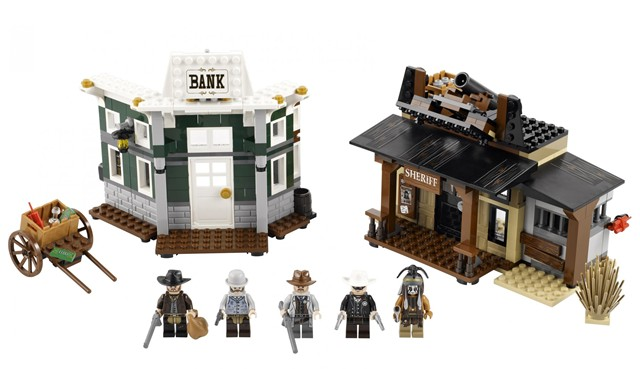

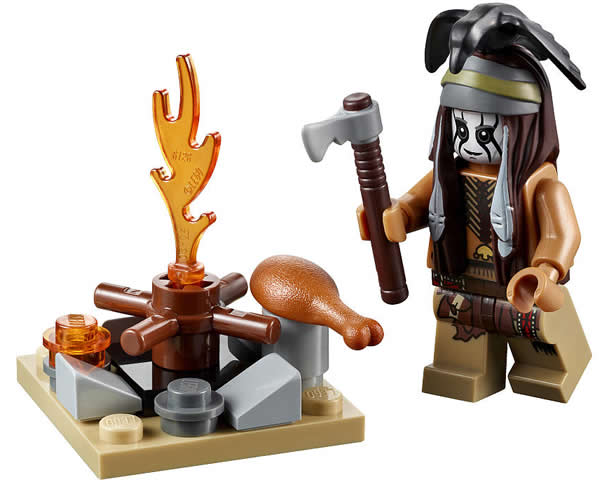
Mino-odaminwaadan
The LEGO Group has included representation in their sets from the beginning, albeit, stereotypical and generalist views of Native American culture. Each First Nation has its own culture and represents themselves as an individual nation. In the Lone Ranger sets, the two additional characters are representative of fictional Comanche Nation members, but the authentic representation for a toy is fairly correct. At the writing of this article, that is all the representative sets I could find. If any readers come across any more, please reach out and let us know.
As LEGO’s company slogan goes, “Leg Godt” or “Play Well.” This is translated to “Mino-odaminwaadan” (in Anishinaabemowin/Ojibwe if my translation is correct—I’m still learning).
What are your thoughts on LEGO’s history representing indigenous people in the Americas? Leave your thoughts in the comments below.
Do you want to help BrickNerd continue publishing articles like this one? Become a top patron like Charlie Stephens, Marc & Liz Puleo, Paige Mueller, Rob Klingberg from Brickstuff, John & Joshua Hanlon from Beyond the Brick, Megan Lum, Andy Price, Lukas Kurth from StoneWars, Wayne Tyler, LeAnna Taylor, Monica Innis, Dan Church, and Roxanne Baxter to show your support, get early access, exclusive swag and more.

